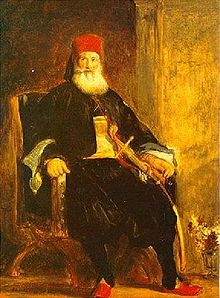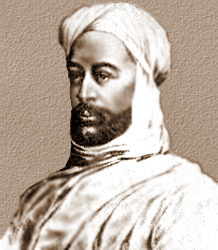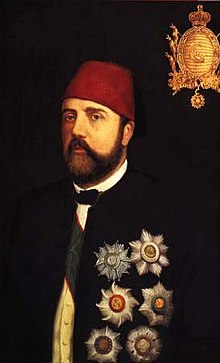Soldiers, traders and slaves: Working in the years of Turkish in Sudan .. Translation and summary: Badr al - Din Hamed al - Hashimi




Soldiers, traders and slaves: Working in the years of Turkish in Sudan .. Translation and summary: Badr al - Din Hamed al - Hashimi
Sudan
Soldiers, traders and slaves: working in Turkish years in Sudan
Soldiers, Traders and Slaves: Labor Control during the Turkiyya
Of chapter in the book: Soldiers, merchants and slaves
Dr. Janetje Ewald
Translated and summarized by: Badr al - Din Hamed al - Hashemi
Introduction: This is a brief translation of some of the last chapter in the book "Soldiers, Traders and slaves" by Dr. Janet J. Ewald, a professor of African history at the Department of History at the Trinity College of Arts and Sciences at Duke University in North Carolina. The author is the first to have documented extensively the struggles of political power that took place in a traditional kingdom in the 18th century, in which religious belief was one of its ideological weapons.
"Abbassiya was known as the capital of the kingdom of Tale, which was located in the north-eastern region of the Nuba Mountains in Southern Kordofan during the 16th or 17th century AD, and it extended its kings to many areas, including the eastern regions of the mountains. Nubia, and remained Abbasid in this capacity even during the reign of the Turkish Turkish Egyptian (1821 - 1885) The Azabt Abbasid region, the leader of the revolution Mahdia Mohammed Ahmed Mahdi, when he migrated to the region and practiced before the publication of his religious call and resistance to the rule of Turkish Egypt in Sudan, Finished the rest N rule my name to the Kingdom during which turned fry duo rule to a rural council. "
The translator
********* ***********
The kingdom of Tale was politically considered one of the marginal areas of Turkish rule. Its kings were not officially or decisively governed by Turkish rule, although some of these kings were sometimes paid tribute to the rulers of Turk and merchants. This "tribute" was often made up of a number of slaves . However, traders never obtained the right to own any land in a traditional kingdom as they did in the areas of the Sudanese Nile Valley. In addition to exploiting slaves as a commodity, they also used them - and to a limited extent - as soldiers in their armies.
The kings of their tradition and traditions succeeded in resisting every attempt made by the various ruling regimes in Sudan to annex their kingdom by force, and the inability of many armed invaders to occupy it. The nature of the region is what facilitated the defense operations, as the mountains constitute a natural fortress, protected from external invasion with its sharp cliff and its rugged slopes and many valleys. Because the kings of the kingdom had owned them through war, they had developed elaborate military plans to defend their densely populated kingdom and high plateau, which had a high rate of rain and abundant drinking water. Turkey's Turkish kingdom was also forcibly evicted by force because of the preoccupation of Turkish troops in other parts of Sudan, the most important of which were the southern regions where elephants and slave traders were active in seeking new sources of trade. The Nuba Mountains did not represent a source of slaves in the Turkish era except in their first two decades. In the next two decades of Turkish rule the eyes of slave and ivory merchants went south. In the 1840s, the area of Tambo (South Arabian Sea) was the largest source of ivory for the white market, and there was little export of it. Since 1863, slave hunters have been trading away from the Nuba and Blue Nile heights. In the last two decades of Turkey, ivory and slave hunting was concentrated in the southern Nile savannah regions. In 1870 Bahr al-Ghazal replaced the White Nile as the main source of slaves.
It is not possible to attribute a marginal status as a marginal kingdom to the Turkish government to its resistance to direct invasion. There were also other reasons for this, including the sharp differences that prevailed in that kingdom between its kings and parish, and members of the ruling families To reduce their community to prevent them from mixing and dealing with merchants coming to their kingdom. Only two of the traditional minarets (Mariod and Nasser) took part, not for trade but for the Turkish government to recruit for their army. But after 1860 the attention of the slave traders was diverted from the tradition anyway.
It occurred at one time (around the 1960s or 1870s) that the alliance of the pharaohs, the son of the isolated mak, with the slave merchants (and their army of burglars from Bahr al-Ghazal) to revolt against Makk Adam, who was ruled in those years. According to some oral sources (specifically from Mr. Ali Engels on 13/3/1979), he was assisted by some foreign merchants (Khawajat) from the Daba market. And succeeded Adam Adam in defeating the stallion and his soldiers, and forced them to resort to Darfur.
The clashes between the kings and their descendants prevented the owners of slaves from obtaining land or military force in the Kingdom. The highlanders received slaves from the invasions in which they were engaged, but the shuttle was in control of the slave-keeping, distribution and operation of their slaves on their own farms, and they were careful not to have any of their flock a large number of slaves, Farmers can expand the cultivation of land in proportion to the royal ban on the possession of parishioners to large numbers of slaves.
A traditional shuttle really wanted to build an army of slaves, but this desire did not find its way to investigate because of their limited power on the ground and work. Feeding an army of slaves required either steady and continuous supplies from the island to feed the soldiers or access to vast agricultural land, and the shuttle did not own any of that. Therefore, the kings adopted a tradition of their subjects in order to get men (infidels) to serve as soldiers. Al-Mukhtar failed to attract fugitives from the Turkish army to join his army
. In other areas, the "cavalry" was not used to exploit the soldiers who were exploited in invasions to obtain more slaves to be recruited into the army. These slaves, after becoming soldiers, would also invade to bring in more slaves. Merchants arrive behind Turkish government soldiers A contingent of Turkish government soldiers left Khartoum in January 1843 towards the southern regions of the Blue and White Nile, raiding villages and arresting their men, women and children. A witness to that invasion recounted what had happened to a French activist who was interested in fighting slavery. He reminded him that some of the men of those villages had joined the Turkish army and sent others to the government in Khartoum as a slave. The rest of those who did not qualify for army service were dismissed as soldiers. These soldiers were in a hurry to get rid of what they had done by selling quickly (and cheaply) to the traders who came behind the soldiers. These invasions and deals were one of the most important means of the financially poor Turkish government to avoid paying regular salaries to its soldiers. Thus, the Turkish soldiers are one of the most important sources of cash production for the government, including the slaves of the slave, part of which goes to Egypt soldiers in the army of Muhammad Ali Pasha, and remains part of the soldiers of the Turkish rule in Sudan, while giving the remaining part of the soldiers to sell to the traders and take their prices as salaries. The historian Richard Hill estimated that in the 1830s, Turkish soldiers in Al-Abyad received two-thirds of their salaries in the form of cloth, cattle and fluffy pieces. In some cases, they traded their prisoners directly for the food and supplies they needed from those merchants, who usually followed the soldiers in their invasions to bring slaves to make these lucrative deals. At the end of the 1830s, the men who were captured in the invasions of the government were brought to the garrison of al-Abyad, where a certain amount of money was assigned to each of them and then to the soldiers as salaries, each according to his military rank. For example, the captain received four men and three children Of the kidnappers instead of the arrears of his salary of 1800 piasters. Two new entrants are given one man of the breeders, whose price is 300-350 piasters, and the newcomers are allowed to decide how to divide the man (or his value). The soldiers offered to buy the thin ones in the white market. Traders try to reduce the official prices for those who want to buy them. Turkish policemen encouraged merchants to export slaves, who bought them at the lowest price. Egypt's customs regulations and tariffs were also encouraging them. Slave sales in Egypt had little to do with tolls. Mohammed Ali Pasha had monopolized all the goods from Sudan such as gum arabic, ostrich feathers and ivory, and the slave was excluded, allowing small traders to deal in his trade. The number of smugglers brought by slave traders from Sudan to Egypt in the 1830s was estimated at between 10 and 12,000 per year. In 1837, the slave trade between central Sudan and the Nile Valley relied heavily on the violence of the rulers of the Sudan in their repeated invasions to bring slaves. The slave market in Dongola passed through twice that year, when the number of slaves destined for Egypt reached its peak. In May and June the market from Khartoum received the harvest of government invasions in March and April of that year. In October and November, another summit of the number of thieves arriving at the Dongola market came from Kordofan directly through the King Valley. The Khartoum market was also full of slaves brought by the Turkish government's army and traders to the capital. The slave traders were not only following the army divisions that were campaigning to invade central areas of Sudan, but sometimes accompanying the teams. In April of 1837, a German traveler was seen on his way to the White Three convoys of smugglers on their way to Khartoum. One of those convoys was led by a merchant, while the other two were led by government soldiers. The Turkish government in Sudan has been sending its soldiers to bring the slave until the last two decades. Slave traders continued to practice this trade but, until then, did not use armed men to invade the villages. After that, the Turkish government no longer sent troops to fetch slaves, and the slave trade remained thriving because slave traders used to recruit armed men who campaigned to invade villages and bring in what they could bring men, women and children. Spaghetti women were engaged in housework in merchants' homes, while men worked in hard labor, such as fetching water from wells and working on farms. The need for slaves to perform these works in El Abyad has increased because of the expansion of the city's wealthy in agriculture. In Dongola, the slave trade also flourished as a result of the need for agricultural workers on European and local Sudanese farms in the region. The Mahdia was unable to find many supporters in the tradition, perhaps because the Kingdom of Titi did not suffer from the Turkish rule as suffered the rest of the other parts of Sudan. In a way traders could not control the shuttle or the kingdom's capabilities, as they did in another logic in central Sudan. Many of the inhabitants of Taleq al-Mahdi did not receive as a savior or dangerous man, but rather their enemy, and from their experience in the Great Nile Valley, one of the righteous clerics who passed through the kingdom. When the Mahdi asked for allegiance, Adam tried to evade, just as he did with the Turks. But despite the fact that the traditional inhabitants had succeeded in resisting Turkish violence, they did not succeed in resisting the hardline Islamic revolution that resulted from Turkish violence. In the end, the Mahdi soldiers succeeded, and much
Resources and energies, in the demolition of a kingdom and the expulsion of many of its inhabitants to exile. However, what a traditional people received in the years of their diaspora must have added to the intellectual construction on which a people whose history had been built was built.alibadreldin @ hotmail com
Source: Sudanile
Comments
Post a Comment